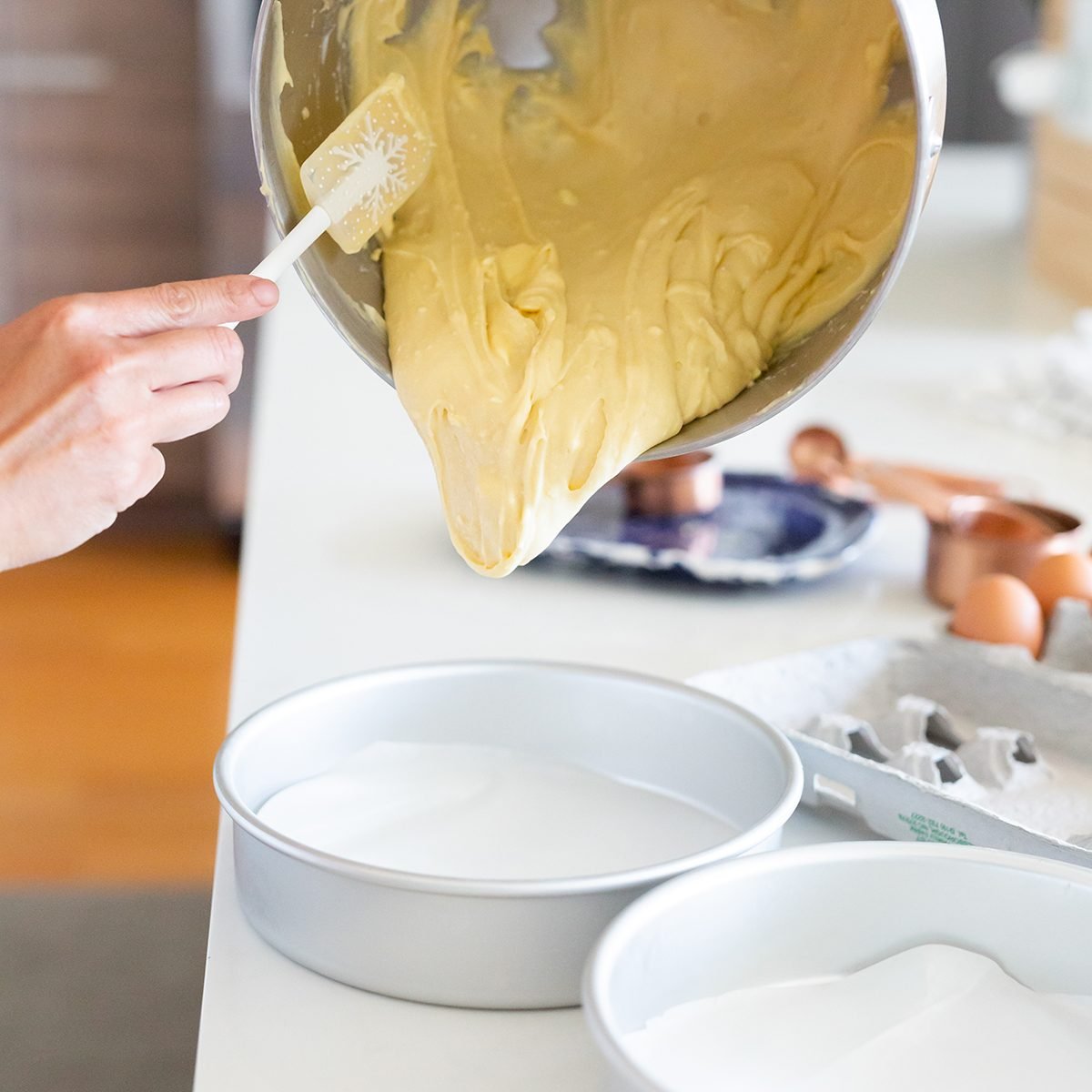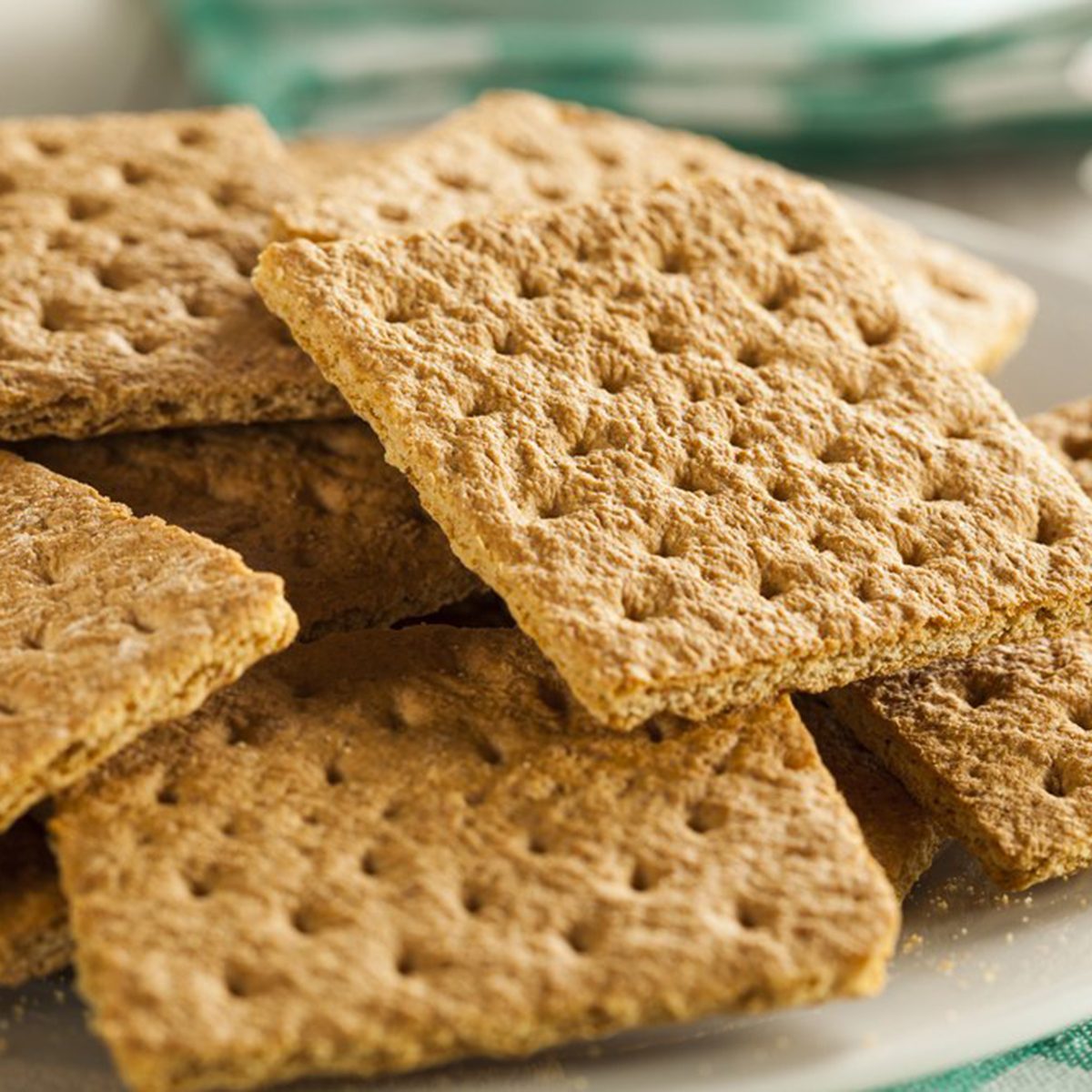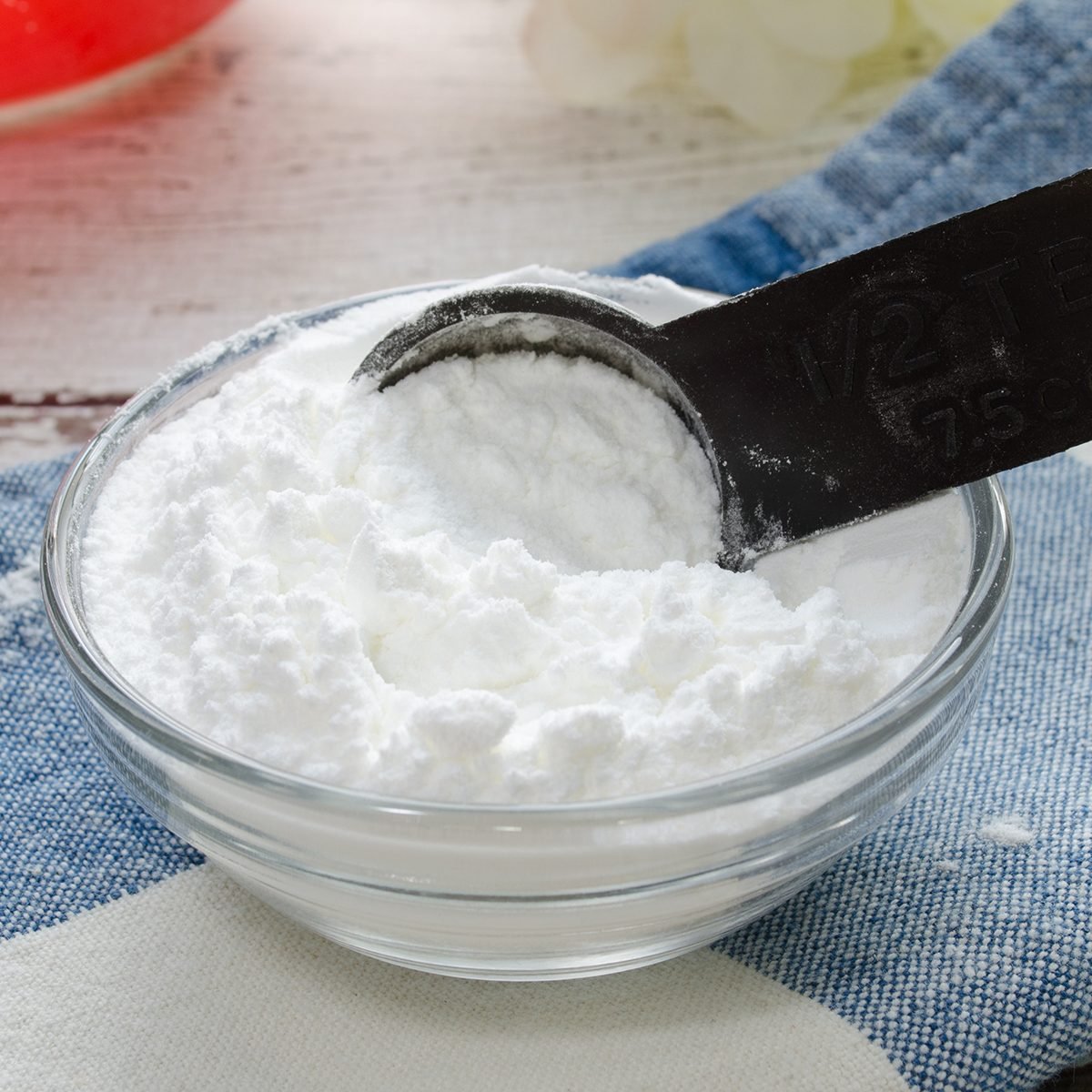When it comes to cakes and cookies, mixing your batter is a lot like starting a relationship. Imagine you just met the person of your dreams. What would happen if you came at them full force with everything you have to offer? Most of the time it would be a complete mess. However, if you take your time, you can create something wonderful and potentially perfect.
The same principle applies here: If you add all your eggs slowly, it will give everything a chance to get to know each other, mesh together and become one. If you add the eggs all at once, the butter-fat mixture won’t be able to absorb it all and won’t create a nice suspension.
It’s About Creating an Emulsion
The reason why lies on a microscopic level. It first starts with creaming butter and sugar. If you’ve done it correctly, you’ll have a light and fluffy mixture that is pretty much all fat. Now we know fat (or oil) and water don’t mix, at least not without some effort. However, when we add the eggs to our creamed mixture, that’s exactly what we’re attempting to do. We’re trying to suspend the water in the egg into the fat, scientifically know as making an emulsion.
Almost all of the water in the egg comes from the egg whites. While the egg yolk is mostly fat, it also has lecithin which is key to helping to create our emulsion. Without turning into a science geek, lecithin is the matchmaker that ties water and fat together, as long as you do it slowly and gently.
The result of this bad emulsion can range anywhere from cookies that spread significantly more than normal, cakes that rise lopsided or baked goods that are tough and dry.
Tips for Adding Eggs
Besides working slowly, there are a few more ways to successfully add eggs to your batters and doughs:
- Use room temp eggs: It’s important that your eggs are at room temperature or about 70° F. If you forgot to let your eggs warm up, place the uncracked eggs in a bowl and cover them with hot tap water for about 10 minutes.
- Make sure the eggs are large: Always use large eggs unless the recipe calls for a different size. If you use extra-large or jumbo eggs the ratio will be thrown off and you may risk breaking the emulsion.
- Whisk first: To absolutely ensure my eggs incorporate slowly, I whisk all my eggs together and then slowly drizzle it into the running mixer. I’ve found this very gradual approach really helps to create a nice emulsion. You’ll find the mixture will be thick, creamy and not curdled.
- Add a little flour: After adding the eggs, the first thing I usually try to add is part of the flour mixture. If you add your liquids first, your emulsion will break and you’ll end up with a curdled mess.
20 Secret Cake Baking Tips We Learned From Grandma

Mix in a Banana
Next time you have ripe bananas, bake a chocolate cake instead of banana bread. Reader Mildred Sherer of Bay City, Texas, says, "Adding a ripe banana to a chocolate cake not only keeps the cake moist, but it also gives it good flavor."
Here are 35 more ways to use up ripe bananas.

Use Parchment Paper
When baking a layer cake, Mrs. Henry Glieb of Lancaster Pennsylvania, says, "I take a double sheet of parchment paper, set the cake pan on it and cut to the right size. Then I put the paper in each pan. When it comes time to remove the layers, they slip out easily."
Avoid these common mistakes when baking a layer cake. 
Add Some Crunch
If you want a quick topping for an applesauce or banana cake, Mrs. Randy Mohr of Breda, Iowa, says, "Sprinkle the batter generously with granulated sugar, coconut and chopped nuts before baking. The cake comes out with a crunchy topping."
Check out the best cake recipe from every state.

Keep Frosting Soft
Mrs. Amos Hoover of Denver, Pennsylvania, says, "I add a teaspoonful of vinegar to my boiled frosting. This keeps it soft and it doesn’t crack when the cake is cut."
These delicious frosting recipes will fancy up any cake.
Add Flavor on the Bottom
Instead of a tasty topping, here's a new twist. Ann Chernabaeff of Wasco, California, says, "Try coating the bottom of a cake pan with crushed graham crackers. They prevent sticking and add an interesting flavor."
These yummy cakes can be baked in your 13x9 pan. 
Use a Whisk
Instead of using a hand sifter to sift dry ingredients for baking recipes, Jane Neave of Zion, Illinois, says, "I blend them with a wire whisk. It works much faster than sifting, and there's less to clean up."
This is the step almost everyone skips when making cookies. (Hint: It's not sifting.)

Pour Even Layers
To obtain nice even layers when baking a layer cake, reader Margaret Thelen of Fowler, Michigan, says, "Spread the batter higher around the outside of the pan. The center usually rises more." Another great tip for level layers? Invest in a set of
cake strips ($19) which wrap around the outside of your cake pan to prevent crowning.
Job (TFH, TOH, RD, BNB, CWM, CM): TOH" class="size-full wp-image-1211692 aligncenter cms-admin-image-300" height="1200" src="https://www.tasteofhome.com/wp-content/uploads/2019/08/shutterstock_229005178.jpg" width="1200">
Spread Frosting Fast
When you bake a cake but have little time to make frosting, here is a simple way from Mrs. Alvin Martin of Mount Joy, Pennsylvania. "While the cake is still warm, spread it with molasses and sprinkle with coconut or nuts."
These vintage cakes taste just like grandma's favorite recipes.

Bake a Better Bundt Cake
Melinda Widner of Waxahachie, Texas, says "I often baked bundt cakes but found the cakes always stuck when I used shortening and flour on the pan. Then one day I greased my pan with shortening and sprinkled it with sugar. I’ve never had a cake stuck since! Just let the cake cool 10 minutes and it’ll pop right out of the pan. With the sugar, most of the cakes don’t even need a glaze!"
Learn how to make olive oil cake.
Give It a Devilishly Delicious Taste
Mrs. Clarence Huss of Hartington, Nebraska, says, "Try grating orange rind into your devil’s food cake batter. It will give it a deliciously different flavor."
Ree Drummond accidentally doubled the butter in her chocolate cake recipe—you'll never guess what happened. <

Use a DIY Baking Powder
If you're out of baking powder—make some! Mrs. Harry Holmes of Davenport, Nebraska, says "Combine 2 teaspoons of baking soda, 1 teaspoon of cream of tartar and a heaping teaspoon of cornstarch."
Psst—this is how to make apple pie spice at home.
Pop Those Air Bubbles
Make sure your cakes come out of the oven perfectly. Mrs. Pat Yingst of Covington, Ohio, says, "When baking a cake, rap your pans sharply on the countertop before putting them in the oven. This will eliminate most of the air bubbles."

Don't Let Cakes Dry Out
For a moist cake, Mrs. Pat Johannsen of Collins, Ohio, says, "I always put a pan of water in the oven while the cake is baking. The heat doesn’t rob the moisture this way."
Make sure you have these essential supplies on hand before baking a cheesecake.
Prep It in Advance
Reader Susan Holtz of Ripon, Wisconsin, says, "Unfrosted cake layers can be frozen on a cookie sheet until firm, wrapped separately with plastic wrap and kept in the freezer. When they’re ready to use, just thaw, frost and serve."
These easy tips will help you decorate a cake like a pro.
Add a Secret Ingredient
Cindi Warren of Algona, Washington, says, "To ensure great moisture and texture in a chocolate cake, add a can of sauerkraut (well-drained) to your cake mix."

Keep the Cake Plate Clean
Before frosting a cake, Joy Lepak of St. Albert, Alberta, says, "Place strips of waxed paper under the bottom layer. After frosting, carefully remove the paper. You’ll have a clean plate."
This is the ultimate vanilla cake you should enjoy on your birthday.

Use this Cleaning Secret
When a cake or cookie recipe calls for corn syrup or molasses, Nancy Goss of Pocahontas, Illinois, says, "First use nonstick cooking spray on your utensils and measuring cups. You’ll be surprised how easily everything comes off later."

Sprinkle on Some Sugar
Mrs. N. Dagerin of Levy County, Florida says, "I've found that sprinkling confectioners' sugar on the cake plate will prevent the cake from sticking when you serve it later."
Check out these expert tips for baking perfect cookies. 
Make It Better with Butter
To get cakes to pop out of the pan easily, reader Noalene Shows of Inverness, Mississippi, says, "Melt about 2 tablespoons of butter or margarine and pour it into the pan. Then turn the pan around and around until it’s coated evenly on the bottom and sides. Put the pan in the freezer and the butter or margarine hardens in a few minutes. Pour the batter into the pan and bake. The cake never sticks to the pan."

Create a Cake Flour Substitute
To substitute all-purpose flour for cake flour, Mrs. Henry Bechthold of Booker, Texas, says, "Use 1 cup of sifted all-purpose flour minus 2 level tablespoons for each cup of cake flour the recipe calls for."
Here are even more ways to use cake flour. The post Why Do You Have to Add Eggs One at a Time in Baking? appeared first on Taste of Home.
source
https://www.tasteofhome.com/article/why-do-you-have-to-add-eggs-one-at-a-time-in-baking/




















0 Response to "Why Do You Have to Add Eggs One at a Time in Baking?"
Post a Comment